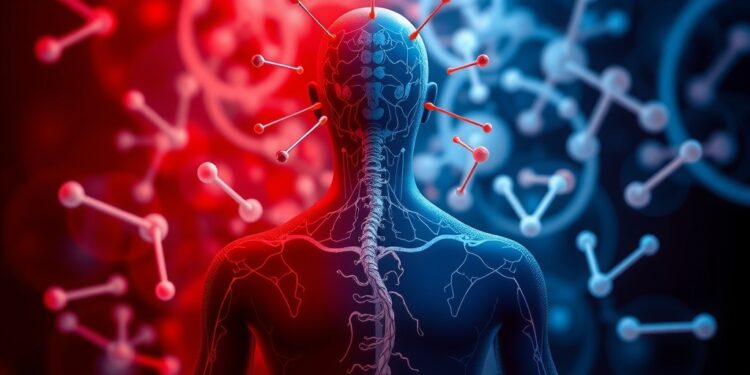Acupuncture, a revered traditional healing practice, is experiencing a renaissance through the lens of modern science, particularly biomechanics. As more researchers delve into the intricate mechanics underlying acupuncture, they are unearthing fascinating insights that could transform therapeutic practices. This exploration spans various biological layers, from the mechanical properties of tissues to the molecular responses elicited by acupuncture. By scrutinizing how these dynamics work together, we gain a clearer understanding of how acupuncture influences health.
One of the primary focuses of biomechanical research in acupuncture is the mechanical response of the skin and underlying tissues to needle insertion. When a needle pierces the skin, it traverses through multiple layers, including the epidermis, dermis, and subcutaneous tissues. Each of these layers has unique structural and mechanical properties. The skin’s elasticity and tensile strength play a pivotal role in how it reacts to the force of the needle. Investigating these properties helps us understand the initial mechanical impact of acupuncture and lays the groundwork for evaluating its efficacy.
As needles are inserted during acupuncture, not only do they elicit physical responses, but they also activate a cascade of biological reactions at the cellular level. The connective tissues surrounding the acupuncture points, such as collagen, become crucial players in this process. Recent studies reveal that the unique arrangement and behavior of these connective tissues can facilitate the optimal transmission of mechanical signals triggered by needling. This phenomenon of mechanical coupling highlights the importance of tissue architecture in determining how acupuncture works and its effectiveness.
Beyond the immediate mechanical interactions, the transmission mechanisms of mechanical signals in acupuncture have drawn significant interest among scientists. Research indicates that mechanosensitive ion channels on cell membranes are activated during acupuncture, leading to various biochemical responses within cells. This activation initiates signaling pathways that promote healing, reduce inflammation, and modulate pain. Understanding these pathways offers potential for refining acupuncture techniques and integrating them with other therapeutic modalities.
Numerical simulation methods are also revolutionizing our understanding of acupuncture mechanics. Through advanced modeling techniques, researchers can simulate the interaction between acupuncture needles and biological tissues, offering visual insights into the needling process. These simulations allow for the exploration of various parameters, such as needle depth, angle, and speed, providing valuable data that can improve clinical practices. By comparing simulated results with clinical outcomes, researchers can assess the validity of these models in real-world scenarios.
Furthermore, the precision of acupuncture treatment can be greatly enhanced by incorporating biomechanics into the practice. Personalization of acupuncture protocols becomes possible when we consider individual patients’ unique anatomical and physiological characteristics. By integrating data from biomechanical studies with patient assessments, practitioners can tailor their techniques to maximize benefits, offering an individualized approach to wellness.
The convergence of disciplines in acupuncture research is a testament to the potential for interdisciplinary innovation. Biomechanists, physiologists, and acupuncture practitioners are collaborating like never before, sharing insights that can lead to groundbreaking advancements. This collective effort not only enriches acupuncture’s scientific foundation but also bridges the gap between traditional practices and modern medicine.
The exploration of acupuncture’s mechanics is still in its infancy, and numerous avenues remain for future research. Establishing standardized protocols for mechanical assessments in acupuncture would aid in the replicability of studies and the validation of findings. Additionally, investigating how varying needle types and techniques influence biomechanical responses could further enhance the therapeutic efficacy of acupuncture.
As we advance our understanding of acupuncture through biomechanical research, it is essential to communicate these findings to the broader medical community. Awareness can pave the way for integrating acupuncture into mainstream health strategies, providing a holistic option for diverse patient populations. Continued education on the science behind acupuncture will be vital in dispelling skepticism and promoting its acceptance as a viable therapeutic practice.
In conclusion, the interdisciplinary investigation into the mechanics of acupuncture is reshaping our understanding of this ancient practice. By merging traditional knowledge with scientific inquiry, we are paving the way for enhanced treatment modalities and personalized care. As research progresses, the potential for innovation in acupuncture continues to expand, promising exciting new horizons for patient health and wellness.
Subject of Research: Biomechanics of Acupuncture
Article Title: Integrative Research on the Mechanisms of Acupuncture Mechanics and Interdisciplinary Innovation
News Publication Date: 2025
Web References:
References:
Image Credits:
Keywords: acupuncture, biomechanics, mechanical properties, connective tissues, mechanosensitive ion channels, personalized treatment, interdisciplinary research




